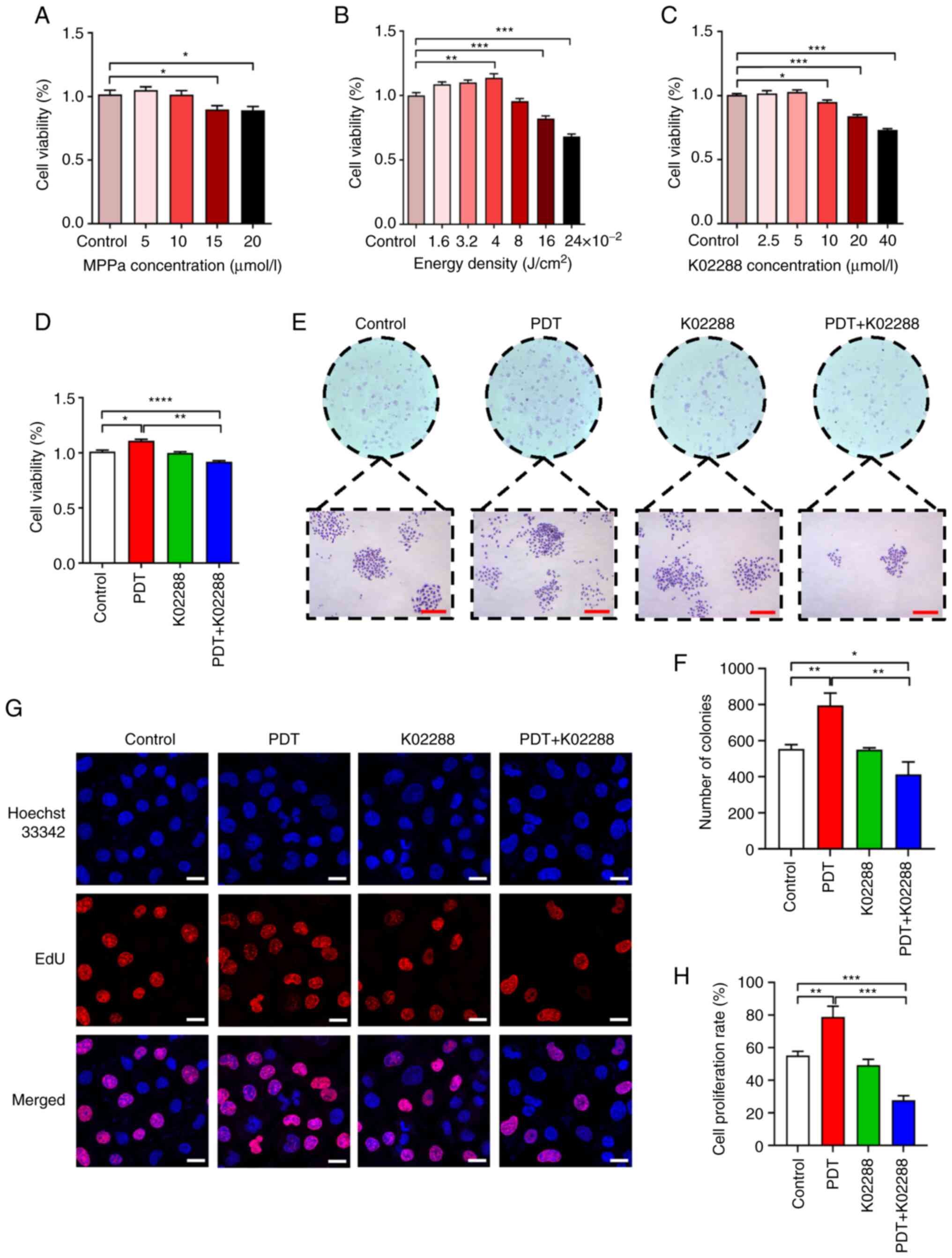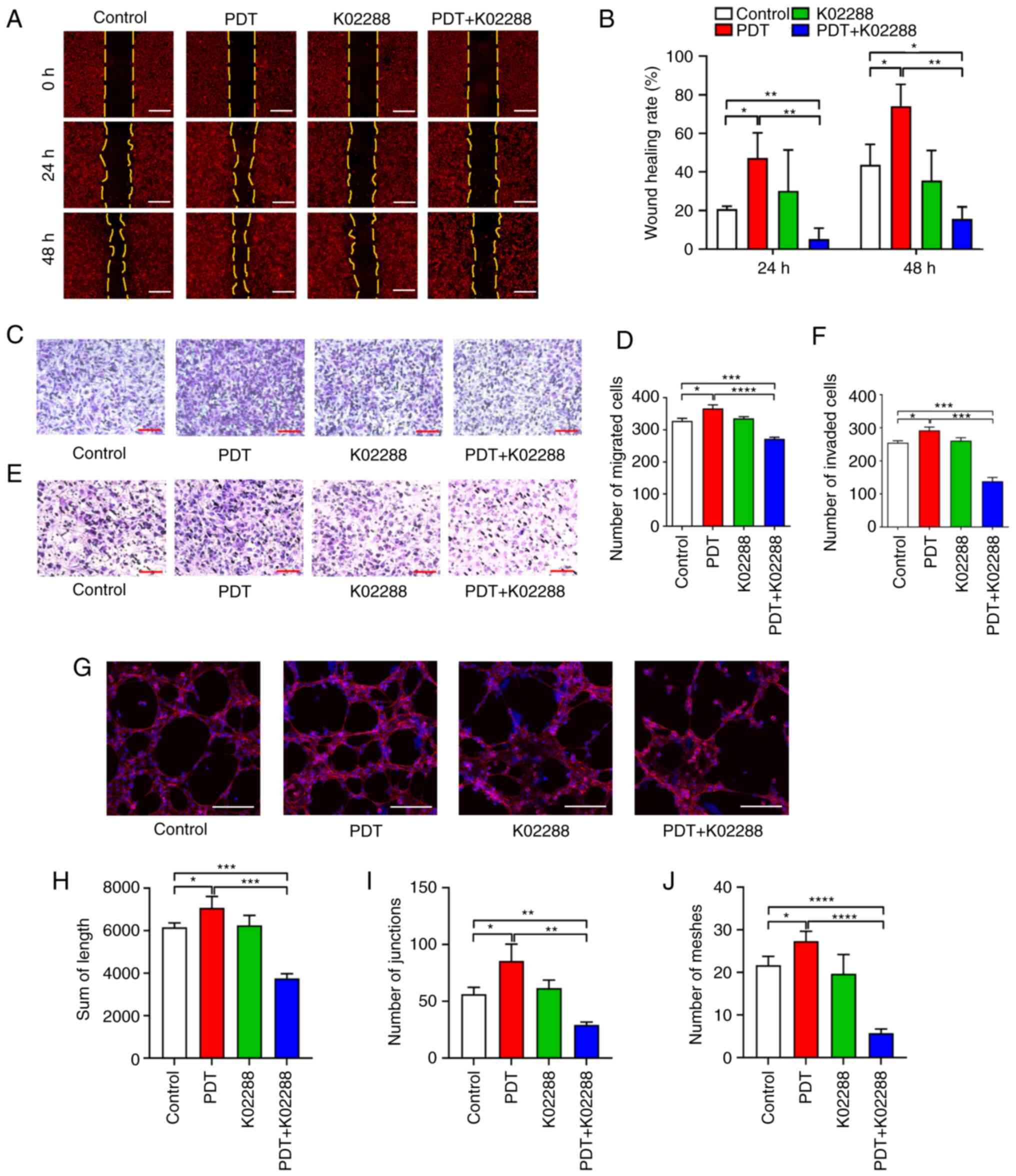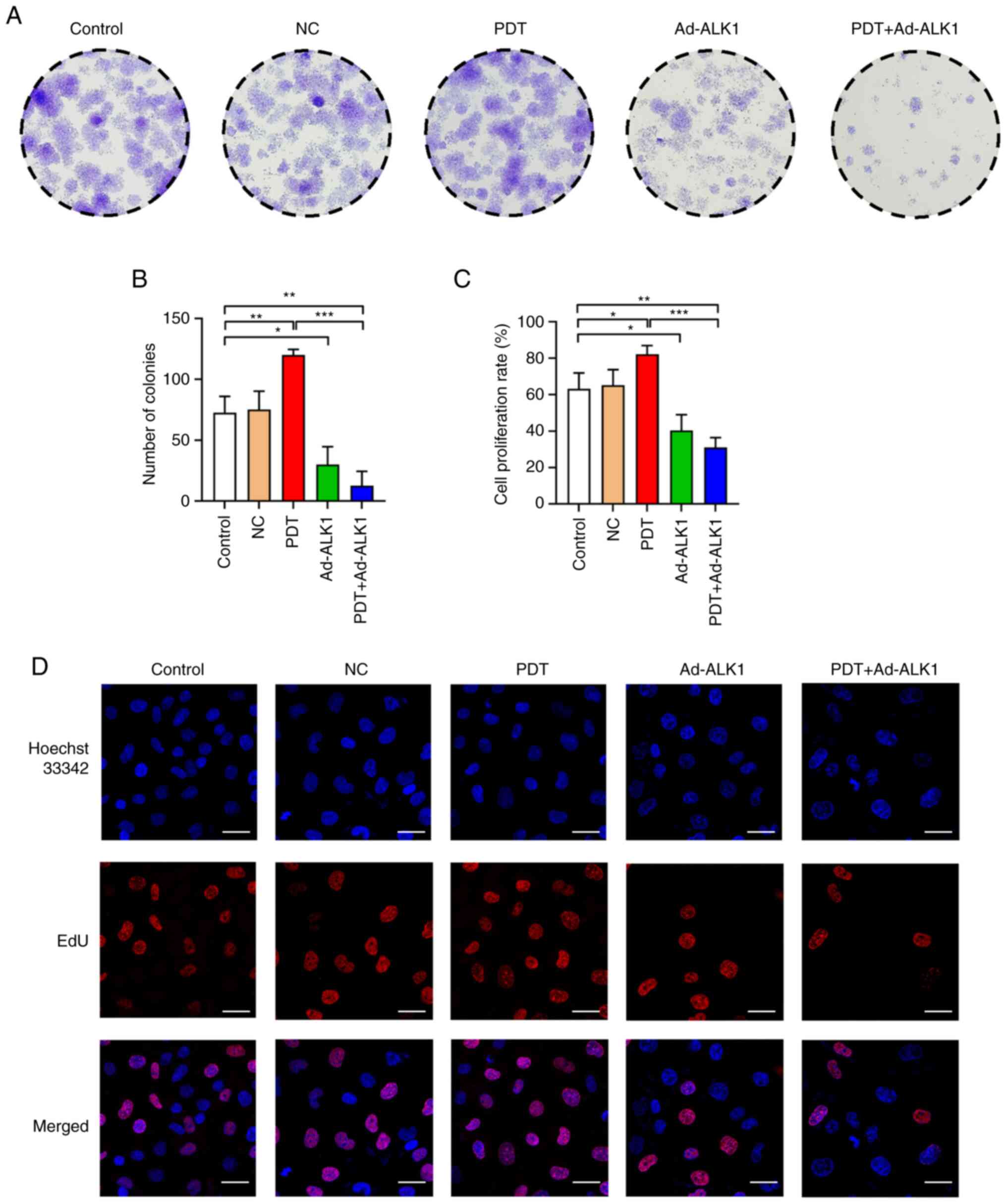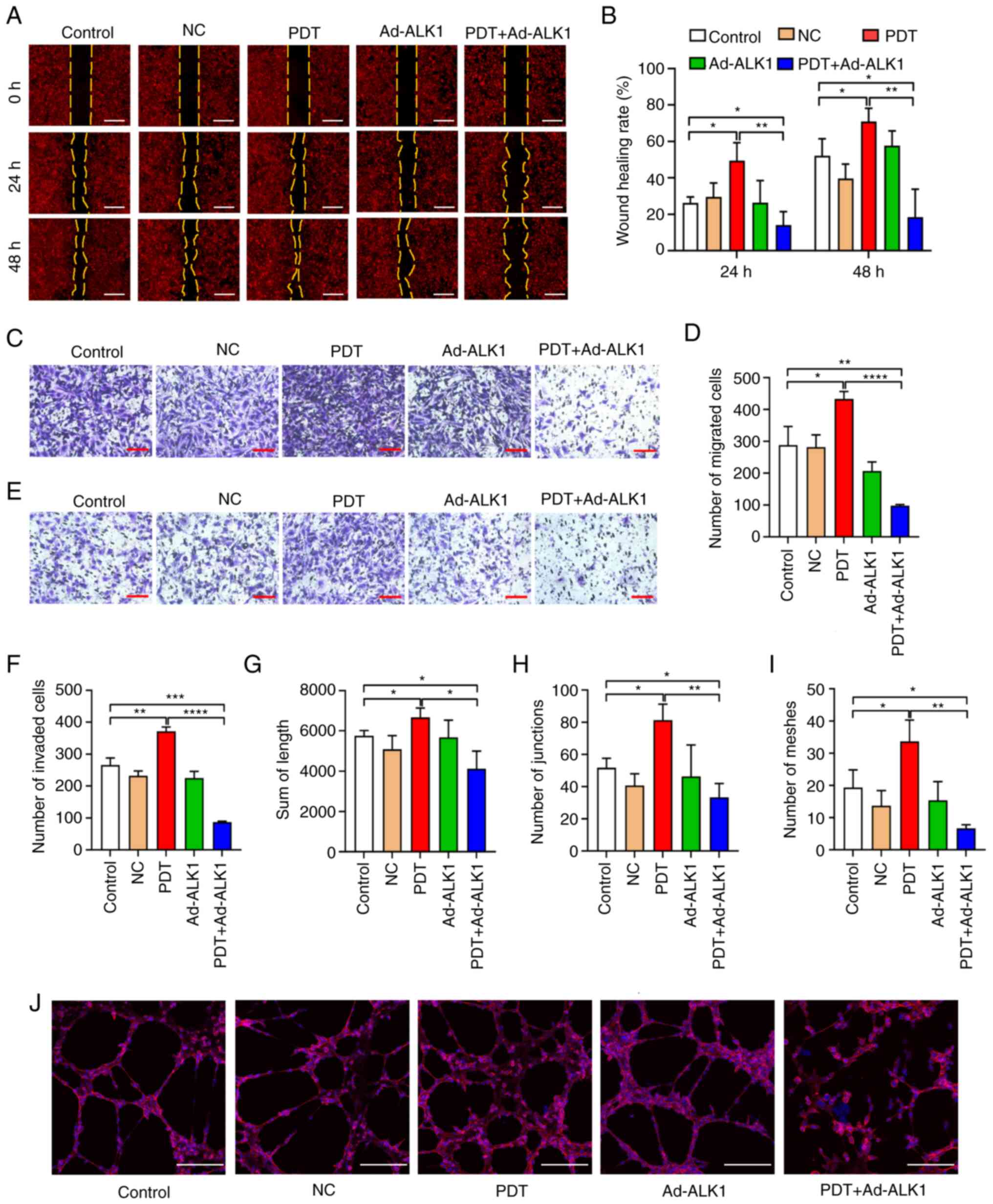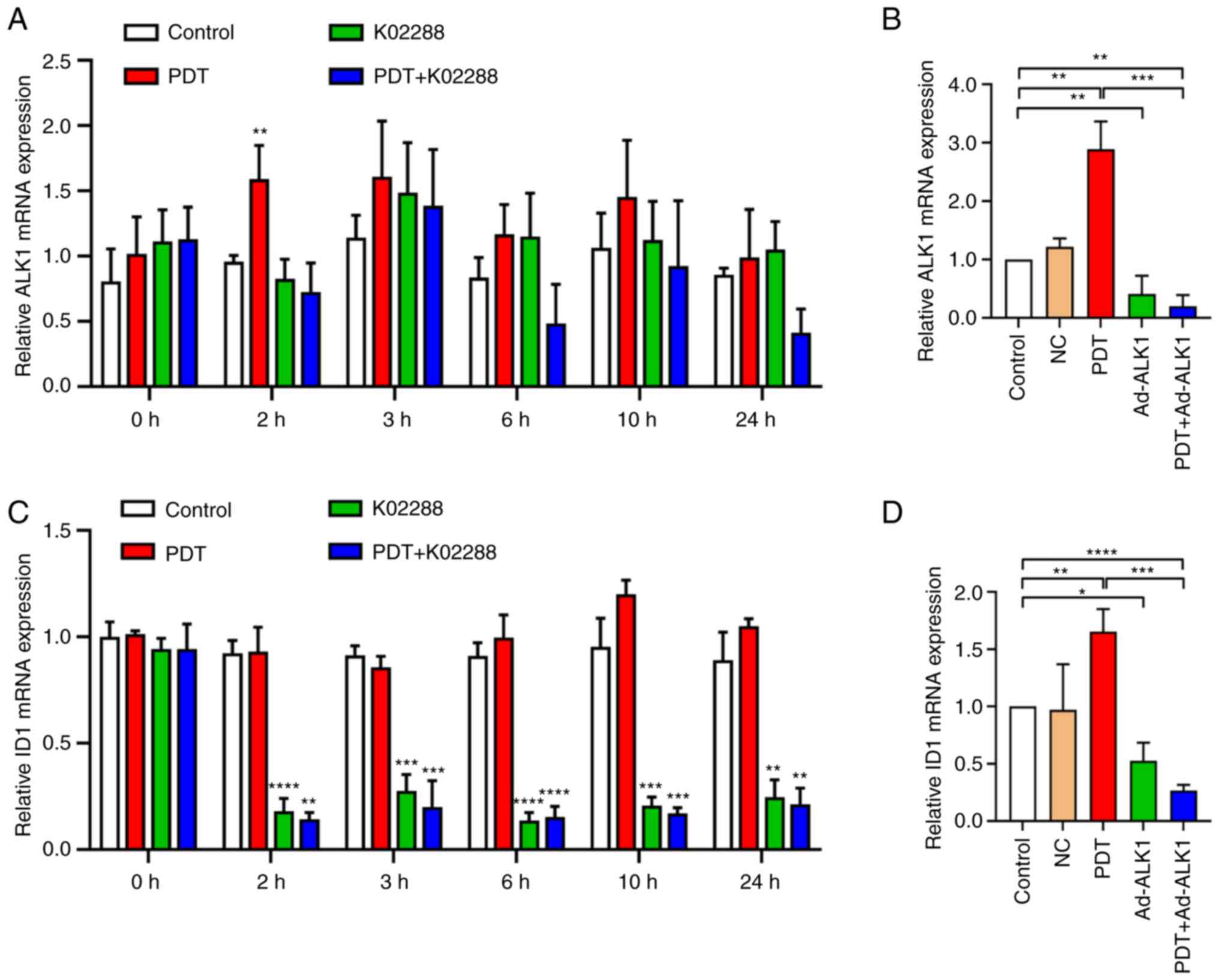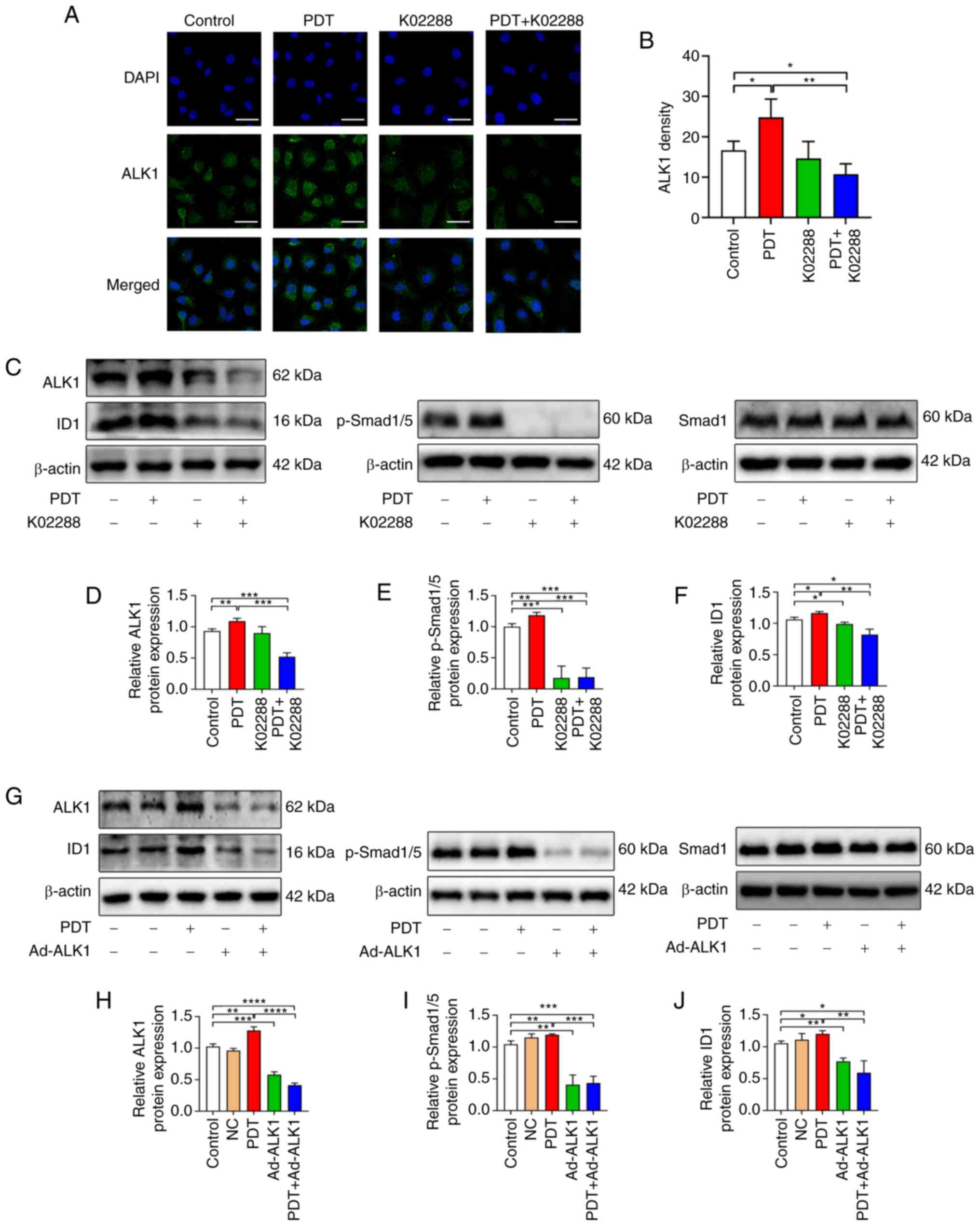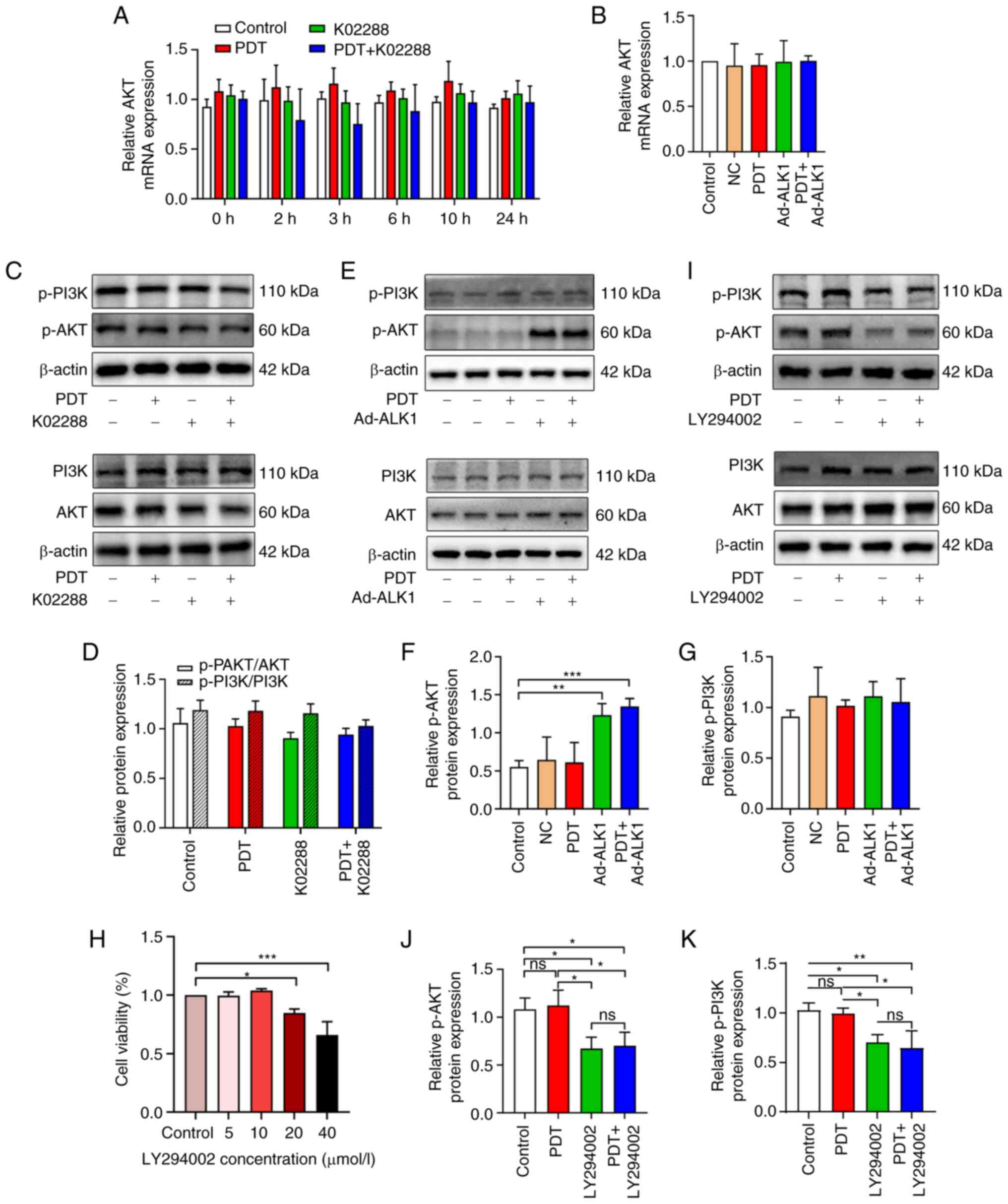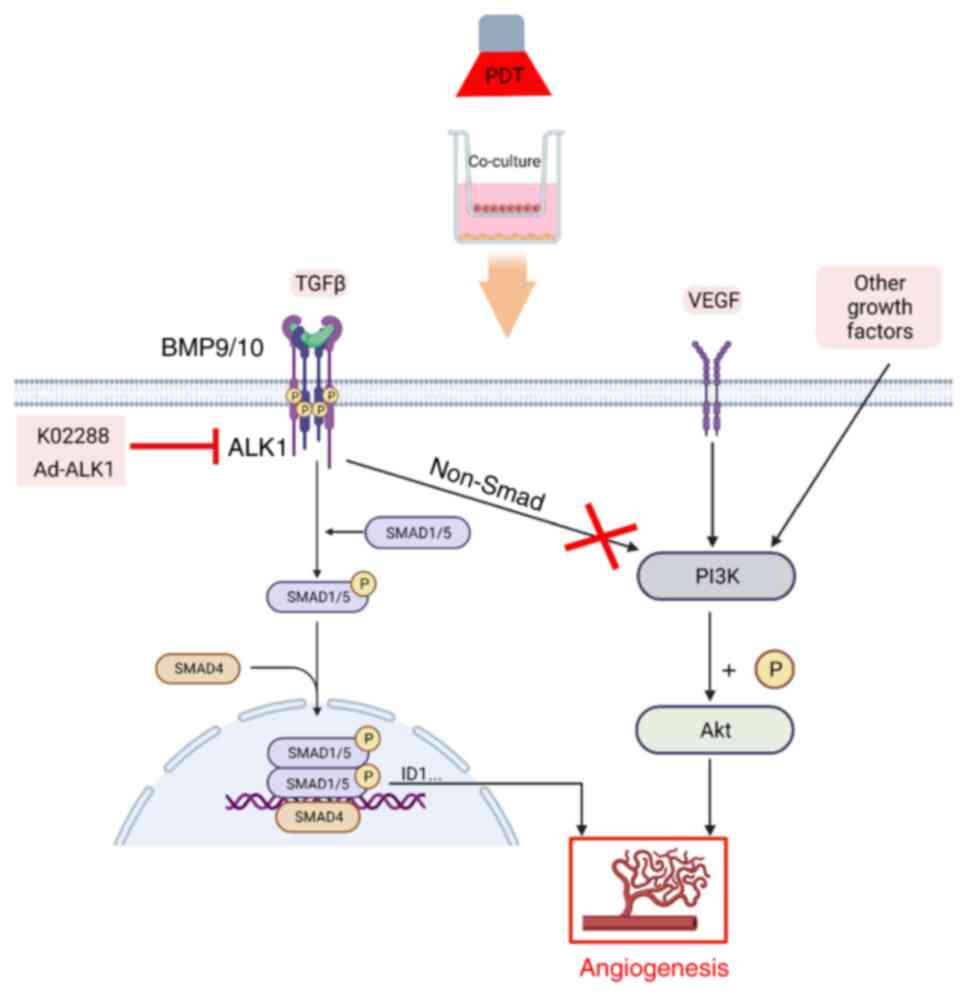|
1
|
Agostinis P, Berg K, Cengel KA, Foster TH,
Girotti AW, Gollnick SO, Hahn SM, Hamblin MR, Juzeniene A, Kessel
D, et al: Photodynamic therapy of cancer: An update. CA Cancer J
Clin. 61:250–281. 2011. View Article : Google Scholar : PubMed/NCBI
|
|
2
|
Li L, Song D, Qi L, Jiang M, Wu Y, Gan J,
Cao K, Li Y, Bai Y and Zheng T: Photodynamic therapy induces human
esophageal carcinoma cell pyroptosis by targeting the
PKM2/caspase-8/caspase-3/GSDME axis. Cancer Lett. 520:143–159.
2021. View Article : Google Scholar : PubMed/NCBI
|
|
3
|
Simone CB II and Cengel KA: Photodynamic
therapy for lung cancer and malignant pleural mesothelioma. Semin
Oncol. 41:820–830. 2014. View Article : Google Scholar : PubMed/NCBI
|
|
4
|
Gamelas SR, Moura NM, Habraken Y, Piette
J, Neves M and Faustino MA: Tetracationic porphyrin derivatives
against human breast cancer. J Photochem Photobiol B.
222:1122582021. View Article : Google Scholar : PubMed/NCBI
|
|
5
|
Leon D, Buchegger K, Silva R, Riquelme I,
Viscarra T, Mora-Lagos B, Zanella L, Schafer F, Kurachi C, Roa JC,
et al: Epigallocatechin gallate enhances MAL-PDT cytotoxic effect
on PDT-resistant skin cancer squamous cells. Int J Mol Sci.
21:33272020. View Article : Google Scholar : PubMed/NCBI
|
|
6
|
Broekgaarden M, Weijer R, van Gulik TM,
Hamblin MR and Heger M: Tumor cell survival pathways activated by
photodynamic therapy: A molecular basis for pharmacological
inhibition strategies. Cancer Metastasis Rev. 34:643–690. 2015.
View Article : Google Scholar : PubMed/NCBI
|
|
7
|
Wan Y, Fu LH, Li C, Lin J and Huang P:
Conquering the hypoxia limitation for photodynamic therapy. Adv
Mater. 33:e21039782021. View Article : Google Scholar : PubMed/NCBI
|
|
8
|
Yue D, Cai X, Fan M, Zhu J, Tian J, Wu L,
Jiang Q and Gu Z: An alternating irradiation strategy-driven
combination therapy of PDT and RNAi for highly efficient inhibition
of tumor growth and metastasis. Adv Healthc Mater. 10:e20018502021.
View Article : Google Scholar
|
|
9
|
De Sanctis F, Ugel S, Facciponte J and
Facciabene A: The dark side of tumor-associated endothelial cells.
Semin Immunol. 35:35–47. 2018. View Article : Google Scholar : PubMed/NCBI
|
|
10
|
Ferrario A, von Tiehl KF, Rucker N,
Schwarz MA, Gill PS and Gomer CJ: Antiangiogenic treatment enhances
photodynamic therapy responsiveness in a mouse mammary carcinoma.
Cancer Res. 60:4066–4069. 2000.PubMed/NCBI
|
|
11
|
Peng CL, Lin HC, Chiang WL, Shih YH,
Chiang PF, Luo TY, Cheng CC and Shieh MJ: Anti-angiogenic treatment
(Bevacizumab) improves the responsiveness of photodynamic therapy
in colorectal cancer. Photodiagnosis Photodyn Ther. 23:111–118.
2018. View Article : Google Scholar : PubMed/NCBI
|
|
12
|
Olivo M, Bhuvaneswari R, Lucky SS,
Dendukuri N and Soo-Ping Thong P: Targeted therapy of cancer using
photodynamic therapy in combination with multi-faceted anti-tumor
modalities. Pharmaceuticals (Basel). 3:1507–1529. 2010. View Article : Google Scholar : PubMed/NCBI
|
|
13
|
Shimizu K, Asai T and Oku N:
Antineovascular therapy, a novel antiangiogenic approach. Expert
Opin Ther Targets. 9:63–76. 2005. View Article : Google Scholar : PubMed/NCBI
|
|
14
|
Weiss A, den Bergh Hv, Griffioen AW and
Nowak-Sliwinska P: Angiogenesis inhibition for the improvement of
photodynamic therapy: The revival of a promising idea. Biochim
Biophys Acta. 1826:53–70. 2012.PubMed/NCBI
|
|
15
|
Hu-Lowe DD, Chen E, Zhang L, Watson KD,
Mancuso P, Lappin P, Wickman G, Chen JH, Wang J, Jiang X, et al:
Targeting activin receptor-like kinase 1 inhibits angiogenesis and
tumorigenesis through a mechanism of action complementary to
anti-VEGF therapies. Cancer Res. 71:1362–1373. 2011. View Article : Google Scholar : PubMed/NCBI
|
|
16
|
de Vinuesa AG, Bocci M, Pietras K and Ten
Dijke P: Targeting tumour vasculature by inhibiting activin
receptor-like kinase (ALK)1 function. Biochem Soc Trans.
44:1142–1149. 2016. View Article : Google Scholar : PubMed/NCBI
|
|
17
|
Roman BL and Hinck AP: ALK1 signaling in
development and disease: New paradigms. Cell Mol Life Sci.
74:4539–4560. 2017. View Article : Google Scholar : PubMed/NCBI
|
|
18
|
Bhatt RS and Atkins MB: Molecular
pathways: Can activin-like kinase pathway inhibition enhance the
limited efficacy of VEGF inhibitors? Clin Cancer Res. 20:2838–2845.
2014. View Article : Google Scholar : PubMed/NCBI
|
|
19
|
Cunha SI, Pardali E, Thorikay M, Anderberg
C, Hawinkels L, Goumans MJ, Seehra J, Heldin CH, ten Dijke P and
Pietras K: Genetic and pharmacological targeting of activin
receptor-like kinase 1 impairs tumor growth and angiogenesis. J Exp
Med. 207:85–100. 2010. View Article : Google Scholar : PubMed/NCBI
|
|
20
|
Hawinkels LJ, de Vinuesa AG, Paauwe M,
Kruithof-de Julio M, Wiercinska E, Pardali E, Mezzanotte L,
Keereweer S, Braumuller TM, Heijkants RC, et al: Activin
receptor-like kinase 1 ligand trap reduces microvascular density
and improves chemotherapy efficiency to various solid tumors. Clin
Cancer Res. 22:96–106. 2016. View Article : Google Scholar
|
|
21
|
Cunha SI, Bocci M, Lövrot J, Eleftheriou
N, Roswall P, Cordero E, Lindström L, Bartoschek M, Haller BK,
Pearsall RS, et al: Endothelial ALK1 is a therapeutic target to
block metastatic dissemination of breast cancer. Cancer Res.
75:2445–2456. 2015. View Article : Google Scholar : PubMed/NCBI
|
|
22
|
Goff LW, Cohen RB, Berlin JD, de Braud FG,
Lyshchik A, Noberasco C, Bertolini F, Carpentieri M, Stampino CG,
Abbattista A, et al: A Phase I study of the Anti-Activin
Receptor-Like Kinase 1 (ALK-1) monoclonal antibody PF-03446962 in
patients with advanced solid tumors. Clin Cancer Res. 22:2146–2154.
2016. View Article : Google Scholar
|
|
23
|
Livak KJ and Schmittgen TD: Analysis of
relative gene expression data using real-time quantitative PCR and
the 2(-Delta Delta C(T)) method. Methods. 25:402–408. 2001.
View Article : Google Scholar
|
|
24
|
Alzeibak R, Mishchenko TA, Shilyagina NY,
Balalaeva IV, Vedunova MV and Krysko DV: Targeting immunogenic
cancer cell death by photodynamic therapy: Past, present and
future. J Immunother Cancer. 9:e0019262021. View Article : Google Scholar : PubMed/NCBI
|
|
25
|
Weijer R, Clavier S, Zaal EA, Pijls MM,
van Kooten RT, Vermaas K, Leen R, Jongejan A, Moerland PD, van
Kampen AH, et al: Multi-OMIC profiling of survival and metabolic
signaling networks in cells subjected to photodynamic therapy. Cell
Mol Life Sci. 74:1133–1151. 2017. View Article : Google Scholar :
|
|
26
|
Dougherty TJ, Gomer CJ, Henderson BW, Jori
G, Kessel D, Korbelik M, Moan J and Peng Q: Photodynamic therapy. J
Natl Cancer Inst. 90:889–905. 1998. View Article : Google Scholar : PubMed/NCBI
|
|
27
|
Blazquez-Castro A, Carrasco E, Calvo MI,
Jaén P, Stockert JC, Juarranz A, Sánz-Rodríguez F and Espada J:
Protoporphyrin IX-dependent photodynamic production of endogenous
ROS stimulates cell proliferation. Eur J Cell Biol. 91:216–223.
2012. View Article : Google Scholar : PubMed/NCBI
|
|
28
|
Espada J, Galaz S, Sanz-Rodríguez F,
Blázquez-Castro A, Stockert JC, Bagazgoitia L, Jaén P, González S,
Cano A and Juarranz A: Oncogenic H-Ras and PI3K signaling can
inhibit E-cadherin-dependent apoptosis and promote cell survival
after photodynamic therapy in mouse keratinocytes. J Cell Physiol.
219:84–93. 2009. View Article : Google Scholar
|
|
29
|
Udartseva OO, Zhidkova OV, Ezdakova MI,
Ogneva IV, Andreeva ER, Buravkova LB and Gollnick SO: Low-dose
photodynamic therapy promotes angiogenic potential and increases
immunogenicity of human mesenchymal stromal cells. J Photochem
Photobiol B. 199:1115962019. View Article : Google Scholar : PubMed/NCBI
|
|
30
|
Zhang X, Jiang F, Zhang ZG, Kalkanis SN,
Hong X, deCarvalho AC, Chen J, Yang H, Robin AM and Chopp M:
Low-dose photodynamic therapy increases endothelial cell
proliferation and VEGF expression in nude mice brain. Lasers Med
Sci. 20:74–79. 2005. View Article : Google Scholar : PubMed/NCBI
|
|
31
|
Muñoz-Félix JM, González-Núñez M and
López-Novoa JM: ALK1-Smad1/5 signaling pathway in fibrosis
development: Friend or foe? Cytokine Growth Factor Rev. 24:523–537.
2013. View Article : Google Scholar : PubMed/NCBI
|
|
32
|
Johnson DW, Berg JN, Baldwin MA, Gallione
CJ, Marondel I, Yoon SJ, Stenzel TT, Speer M, Pericak-Vance MA,
Diamond A, et al: Mutations in the activin receptor-like kinase 1
gene in hereditary haemorrhagic telangiectasia type 2. Nat Genet.
13:189–195. 1996. View Article : Google Scholar : PubMed/NCBI
|
|
33
|
Urness LD, Sorensen LK and Li DY:
Arteriovenous malformations in mice lacking activin receptor-like
kinase-1. Nat Genet. 26:328–331. 2000. View
Article : Google Scholar : PubMed/NCBI
|
|
34
|
Scharpfenecker M, van Dinther M, Liu Z,
van Bezooijen RL, Zhao Q, Pukac L, Löwik CW and ten Dijke P: BMP-9
signals via ALK1 and inhibits bFGF-induced endothelial cell
proliferation and VEGF-stimulated angiogenesis. J Cell Sci.
120:964–972. 2007. View Article : Google Scholar : PubMed/NCBI
|
|
35
|
Fu Y, Wang H, Dai H, Zhu Q, Cui CP, Sun X,
Li Y, Deng Z, Zhou X, Ge Y, et al: OTULIN allies with LUBAC to
govern angiogenesis by editing ALK1 linear polyubiquitin. Mol Cell.
81:3187–3204.e7. 2021. View Article : Google Scholar : PubMed/NCBI
|
|
36
|
Somekawa S, Imagawa K, Hayashi H, Sakabe
M, Ioka T, Sato GE, Inada K, Iwamoto T, Mori T, Uemura S, et al:
Tmem100, an ALK1 receptor signaling-dependent gene essential for
arterial endothelium differentiation and vascular morphogenesis.
Proc Natl Acad Sci USA. 109:12064–12069. 2012. View Article : Google Scholar : PubMed/NCBI
|
|
37
|
Li W, Salmon RM, Jiang H and Morrell NW:
Regulation of the ALK1 ligands, BMP9 and BMP10. Biochem Soc Trans.
44:1135–1141. 2016. View Article : Google Scholar : PubMed/NCBI
|
|
38
|
Hou X, Peng Y, Liu J, Zhong Q, Yu Z and
Zhang L: Bone morphogenetic protein-9 promotes the proliferation of
non-small cell lung cancer cells by activating PI3K/Akt and Smad1/5
pathways. RSC Adv. 10:7214–7220. 2020. View Article : Google Scholar : PubMed/NCBI
|
|
39
|
Ola R, Dubrac A, Han J, Zhang F, Fang JS,
Larrivée B, Lee M, Urarte AA, Kraehling JR, Genet G, et al: PI3
kinase inhibition improves vascular malformations in mouse models
of hereditary haemorrhagic telangiectasia. Nat Commun. 7:136502016.
View Article : Google Scholar : PubMed/NCBI
|
|
40
|
Chen H, Pan R, Li H, Zhang W, Ren C, Lu Q,
Chen H, Zhang X and Nie Y: CHRDL2 promotes osteosarcoma cell
proliferation and metastasis through the BMP-9/PI3K/AKT pathway.
Cell Biol Int. 45:623–632. 2021. View Article : Google Scholar :
|
|
41
|
Gong T, Cui L, Wang H, Wang H and Han N:
Knockdown of KLF5 suppresses hypoxia-induced resistance to
cisplatin in NSCLC cells by regulating HIF-1α-dependent glycolysis
through inactivation of the PI3K/Akt/mTOR pathway. J Transl Med.
16:1642018. View Article : Google Scholar
|















